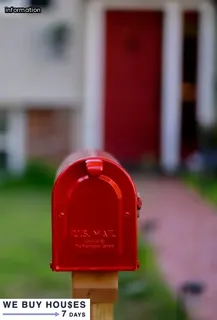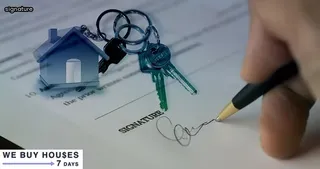Completing a quit claim deed for a house in Iowa requires understanding the laws and regulations of the state. It is important to know that Iowa law requires that all deeds be recorded with the county recorder's office in order to be legally binding.
Additionally, it is necessary to have valid identification such as a driver’s license or passport when signing the deed. The document must also include accurate information regarding ownership of the property, including names of current and former owners, legal descriptions of the property, and signatures of both parties involved in the exchange.
To ensure accuracy, it is highly recommended to seek legal advice prior to signing any documents related to real estate transactions. Furthermore, all quit claim deeds should include a notarized signature from at least one witness who can testify to the legality of the transaction.
Finally, it is important to make sure that any taxes related to the transfer are paid before submitting the completed deed.

Completing a quit claim deed for a house in Iowa requires certain steps to ensure the document is legally valid. First, the grantor must provide their name and address on the form.
Next, the grantee should be identified with their name and address. The property to be transferred should then be listed, including its legal description, as well as any consideration being given from the grantee to the grantor for transferring the property rights.
After this information is included, both parties must sign and date the document before it can be filed with the county recorder's office. This filing will require payment of any applicable fees.
Additionally, if there are any liens or encumbrances on the property they must also be addressed in order for transfer of title to occur without complications. Finally, if any additional documents are needed to complete the quit claim deed process they must also be provided before title can actually change hands.
While this may seem like a lot of work upfront, following these steps will ensure that your quit claim deed is legally binding in Iowa and that ownership transfers properly.
Filing a quit claim deed in Iowa can seem like an intimidating task. However, with the right knowledge and guidance, it can be a straightforward process.
The first step is to obtain the necessary documents from your local county recorder's office or download them online. These documents will provide instructions on how to properly fill out the form and details regarding the requirements for filing.
It is important to ensure that all information is accurate and complete prior to submission. Once completed, you will need to sign the document in front of a notary public who can also certify it if necessary.
After signing, you should deliver or mail the original quit claim deed with any accompanying forms directly to the county recorder's office where you obtained it from. You should also provide contact information so that they may follow up with any questions or concerns about your application.
Lastly, if applicable, you may need to pay a fee for recording the deed with your local county recorder's office. Following these steps will help you complete and file an Iowa quit claim deed successfully and quickly.

Using a quit claim deed to transfer property in Iowa offers numerous advantages. The process is relatively simple and straightforward, making it ideal for those who need to transfer property quickly and without complication.
Quit claim deeds are also very cost-effective compared to other methods of transferring title. Furthermore, they can be used to transfer any kind of interest in real estate, including full ownership or a partial stake in the property.
In Iowa, quit claim deeds provide an efficient method of transferring title with minimal paperwork and no court involvement or registration requirements. They are also legally binding documents that can be used as evidence of ownership should any disputes arise in the future.
Additionally, quit claim deeds provide protection against potential liability resulting from unknown or undisclosed claims on the transferred property. All these benefits make quit claim deeds an attractive option for those looking to transfer title in Iowa.
Free resources to download an Iowa Quit Claim Deed Template are widely available online. A quit claim deed is a legal document used to transfer ownership of real estate in the state of Iowa and must be completed correctly to ensure its validity.
The deed outlines the details of the transfer, such as names of parties involved, description of property, and other pertinent information. To complete a quit claim deed for a house in Iowa, you will need to download an appropriate template from a reliable source.
Many websites offer free templates that can be printed or filled out electronically and then submitted online or via mail. Additionally, some local county offices may have downloadable forms available on their websites as well.
Once the form is obtained, it should be carefully reviewed for accuracy before signing in front of two witnesses and having it notarized if necessary. It’s important to note that quit claim deeds only transfer ownership rights and do not guarantee title insurance or provide any other protection against disputes over ownership rights; these must be obtained separately if needed.

When completing a quit claim deed in Iowa, there are other documents that must be obtained in order to ensure the process runs smoothly. The most important document is a Property Record Card which can be found through the Iowa county assessor's office.
This document will contain information about the legal description of the house and any relevant taxes or liens that need to be addressed. In addition, an owner's title policy from an insurance company is required to make sure no other claims exist on the property.
Lastly, it is essential to obtain a statement from an attorney who specializes in real estate law confirming that all required documents have been filed correctly and all signatures are valid. Having these documents ready before beginning the process of a quit claim deed for a house in Iowa will help ensure everything goes as planned.
In Iowa, there are several important documents that must be completed in order to transfer ownership of a house. One of the most common forms is a quit claim deed, which outlines the legal process of transferring property rights from one person to another.
A quit claim deed is an agreement between two or more parties on how title to a piece of real estate should be held. It includes information such as the current owner's name and address, the recipient's name and address, and any additional details related to the transfer.
In Iowa, it is necessary to fill out a quit claim deed form in order for the transaction to be legally binding. The document must be signed by both parties and filed with the county recorder's office in order for it to become official.
Additionally, other documents may need to be included such as proof of ownership or tax records. It is important to understand all aspects of completing a quit claim deed for a house in Iowa before beginning the process.

When writing a legal description for a house in Iowa, it is important to provide an accurate and detailed account of the property in order to ensure that the quit claim deed is properly recorded. When creating a legal description, start by including the address of the property, then include the county and township where it is located.
Additionally, mention any unique features or identifiers such as bodies of water or roads nearby. It is also important to include measurements when describing the property such as acreage and boundary lines.
Be sure to specify who owns any adjacent properties and describe any easements that may be applicable to the location. Finally, it is essential to make sure all information provided on the quit claim deed is accurate in order to properly complete it.
Completing a quit claim deed for a house in Iowa involves transferring the ownership of real estate from one individual to another. Before starting this process, it is important to understand the basics.
The key elements of a quit claim deed are the grantor, grantee, legal description of the property, and consideration. The grantor is typically the current owner/seller and must sign the document in order to transfer ownership rights.
The grantee is typically the new owner/buyer and will receive ownership rights on completion of the deed. The legal description should include information about the parcel such as acreage, county records number, and address.
Consideration refers to the amount that was agreed upon between buyer and seller in exchange for transferring title. Upon completion of all required information on the document, both grantor and grantee must sign before witnesses or a notary public can access it as valid.
Once a witness or notary public signs off on it then it can be submitted with other documents to Iowa's county recorder's office where they will securely file it for future reference.

Purchasing and selling property via an Iowa Quit Claim Deed is a beneficial way to transfer real estate. The process involves the grantor signing the deed to give ownership of the property in question to a grantee, and both parties must complete it in order for it to be valid.
To ensure that both parties meet all necessary legal requirements, one should make sure they understand the basics of completing a quit claim deed for a house in Iowa. First, there must be an acknowledgement from both the grantor and grantee that the deed is legally binding.
Then, the necessary information about both parties must be included on the document, such as their names, addresses and signatures. Furthermore, descriptions of the property being transferred are essential for accuracy.
After this information has been added to the document, it should be notarized by either party before being filed with the county recorder's office. Following these steps will help ensure that purchasing or selling a house in Iowa with a Quit Claim Deed runs smoothly.
Transferring property between two parties in the state of Iowa can be done by either a traditional method or a quicker option. The traditional method is to use a quit claim deed to transfer ownership, which requires an in-depth understanding of Iowa's real estate laws and regulations.
This process typically takes several weeks to complete and involves numerous steps, including obtaining the deed from the county recorder's office, completing the paperwork correctly, and filing it with the county clerk. On the other hand, a quicker option for transferring ownership is available that can save time and money.
This option utilizes an online service that allows users to fill out all necessary forms quickly and securely. It then provides an electronic copy of the completed quit claim deed which can be filed with the county clerk's office within minutes.
Both options provide benefits when transferring property in Iowa, but it is important to consider the advantages of each before making a decision on which process is best for your needs.

Using an Iowa Quit Claim Deed to transfer ownership of a house can be a daunting process, but understanding the common misconceptions about its use can help make it easier. Many people mistakenly believe that a Quit Claim Deed is the same as a Warranty Deed, which is not true.
While a Warranty Deed guarantees clear title on the property, a Quit Claim Deed does not. Additionally, while both documents need to be signed by both parties in order to take effect, only the grantor needs to sign the Quit Claim Deed.
Furthermore, many people are under the impression that registering or filing with the county is necessary for completing a Quit Claim Deed. However, this is not always true; depending on the situation and state regulations, this may or may not be necessary.
It is therefore important for both parties involved to consult with an attorney or other legal advisor before starting the process of completing an Iowa Quit Claim Deed for a house.
Filing an Iowa Quitclaim Deed can be a costly and time-consuming process, but it is an important step in transferring ownership of a house. The fees and taxes associated with the filing of a Quit Claim Deed in Iowa vary based on the county where the property is located.
Generally, there is a fee to cover administrative costs, filing costs, and recording costs. In some counties, there may also be transfer taxes that need to be paid.
Additionally, owners may need to pay taxes required by law; these could include state income tax or real estate taxes depending on the situation. It’s important to research all of the costs associated with filing an Iowa Quit Claim Deed and understand what’s required before submitting the paperwork.
Understanding these fees and taxes can help ensure that everything is done correctly and that all documentation is in order before transferring ownership of a house in Iowa.

In Iowa, only the current owner of the house (grantor) can sign a quitclaim deed to transfer ownership. The grantee must also sign the deed in order for it to be valid.
In addition, both parties must have their signatures notarized by an Iowa notary public. If there are multiple owners of the house, all must sign the deed and have it notarized.
It is important to note that if either party is married, their spouse must also join in signing the deed and have it notarized. This is true even if the spouse does not own any part of the property being transferred.
It is also required that all owners provide proof of their identification when signing this document. All signatures must be witnessed by two people who are at least 18 years old and know the identity of each party involved in the transaction.
A quitclaim deed for a house in Iowa must include the legal names of both the grantor and grantee, as well as a description of the property being transferred. The deed should also include the county and state where the property is located, and provide a signature line for both parties to sign.
Furthermore, an acknowledgment from a notary public must be included on the document to verify that all parties have signed the deed. It is also important to note that although Iowa does not require a quitclaim deed to be recorded with the county recorder's office, it is highly recommended in order to protect both parties' interests in the property.
In some cases, lenders may even require recording of a quitclaim deed.

Completing a quitclaim deed for a house in Iowa requires filling out an existing or blank form. To begin, you must identify the property by including the legal description of the real estate.
Then, provide the names of both parties to the transaction as they will be listed on the deed. After that, list any additional conditions and restrictions that may apply to the transfer of ownership.
Lastly, have all parties sign and date the form and have it notarized. Once this is complete, you can submit your quitclaim deed to your county recorder's office for recording.
It is important to note that each state has specific requirements when it comes to transferring ownership of real estate so it is best to consult with a qualified professional prior to completing any paperwork.
A Quit Claim Deed is a document used to transfer property ownership in Iowa. It is an important document when transferring real estate and should be completed correctly.
In addition to being used when buying and selling a house, the Quit Claim Deed can also be used for other types of real estate transfers such as gifting a home to family members or transferring the deed between spouses. The process for completing an Iowa Quit Claim Deed is relatively simple but it is important to understand the requirements before beginning the process.
It is recommended that individuals seeking to transfer property consult with a lawyer who can provide advice on the process as well as ensure all paperwork is properly completed. Additionally, Iowa county offices may have specific requirements for filing the deed that must be followed in order for it to be legally valid.
Taking time to thoroughly research and understand what needs to be done will help ensure that the Quit Claim Deed process runs smoothly and that all parties involved are protected from any potential legal issues down the road.

When signing a Quit Claim Deed for a house in Iowa, it is important to understand the rights and obligations of all parties involved. This document transfers property ownership from one party (the grantor) to another party (the grantee).
The grantor must have legal authority to transfer the property, and the grantee must accept the deed in order to gain possession of the property. The deed should also specify any conditions that are attached to the transfer of ownership.
Once signed and notarized, both parties are legally obligated to abide by the terms of the deed. If either party does not fulfill their obligations, this can lead to legal action being taken against them.
It is essential for those involved in an Iowa quit claim deed to fully comprehend their rights and obligations prior to signing this document.
Filing a quit claim deed in Polk County Iowa is a relatively straightforward process. The first step is to complete the quit claim deed, which can be obtained from the Polk County Recorder's office or online.
When filling out the form, it is important to include all of the necessary information, including the names of the grantor (the person transferring ownership) and grantee (the person receiving ownership), as well as a legal description of the property. Once this has been completed, two copies should be signed by both parties in front of a notary public.
In Iowa, both copies must be accompanied by an affidavit of consideration, which shows how much money was exchanged for the property. After that has been completed, the original quit claim deed must be filed with the Polk County Recorder's office along with an application for recording and any applicable fees.
Upon receipt of these documents, the Recorder will process them and issue a new certificate of title or deed in the name of the new owner.

A warranty deed in Iowa is a legal document that provides assurance to the buyer of a property that the seller has clear title to the property and can transfer it without any encumbrances. The quit claim deed is a document used for transferring ownership of real estate from one party to another, with no warranties made by the grantor as to the quality of title.
It is often used when transferring property between family members or when a married couple wants to change ownership from joint tenancy to tenancy in common. In order to complete a quit claim deed for a house in Iowa, all parties involved must sign and date the document and have it notarized.
In addition, two witnesses must also sign the quit claim deed in order for it to be legally valid. Finally, it should be filed with the county recorder’s office within 30 days of execution.